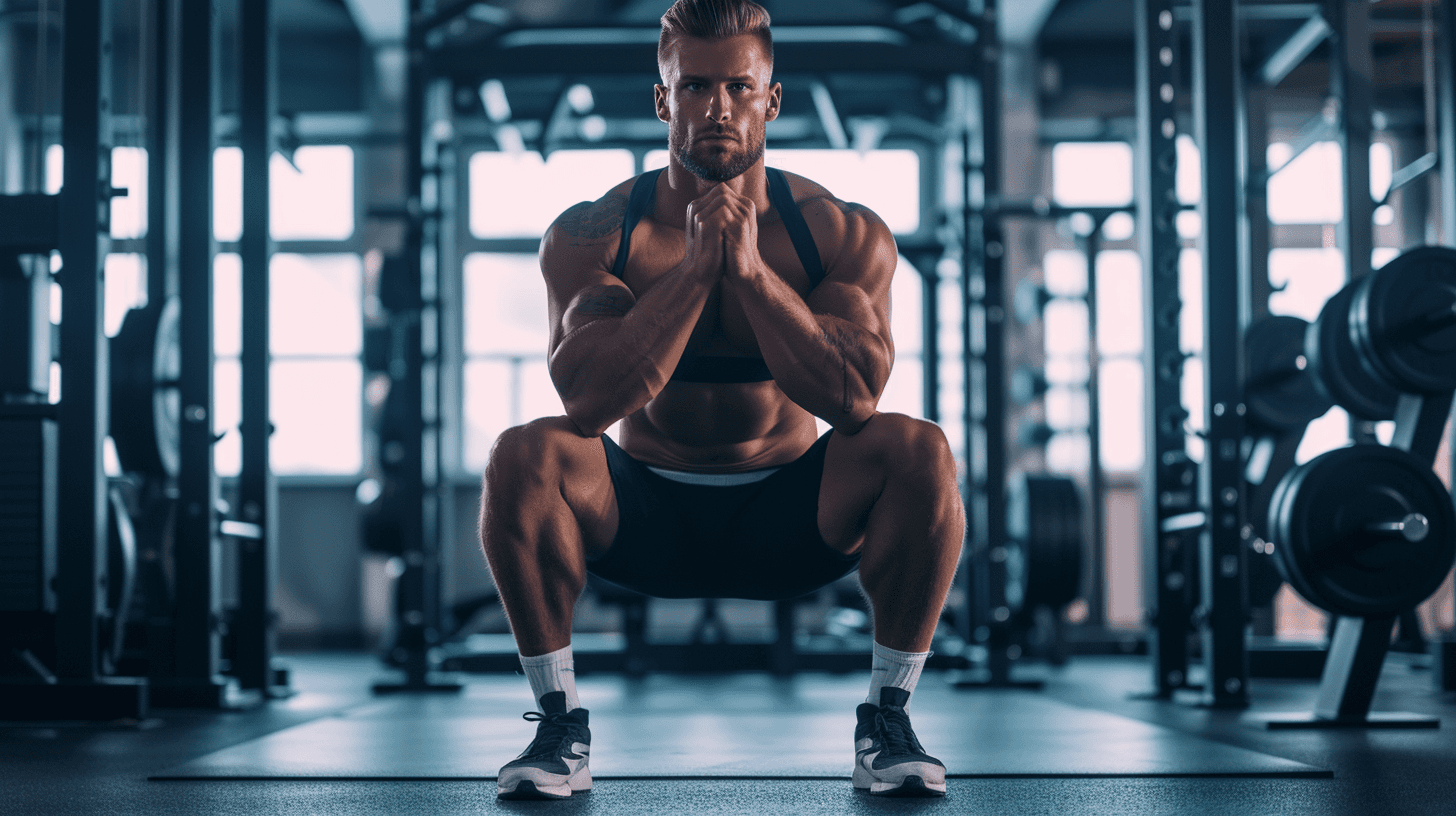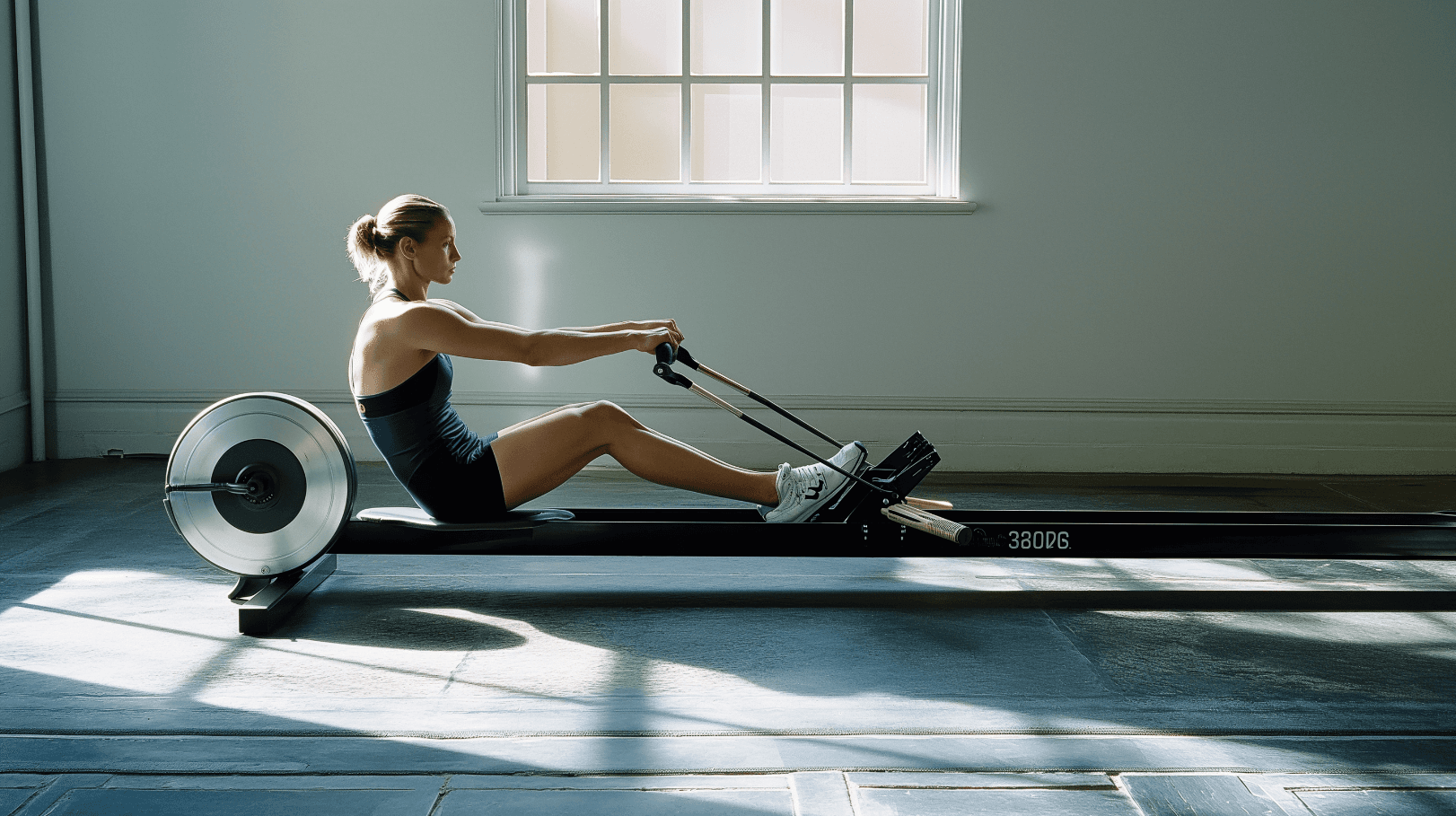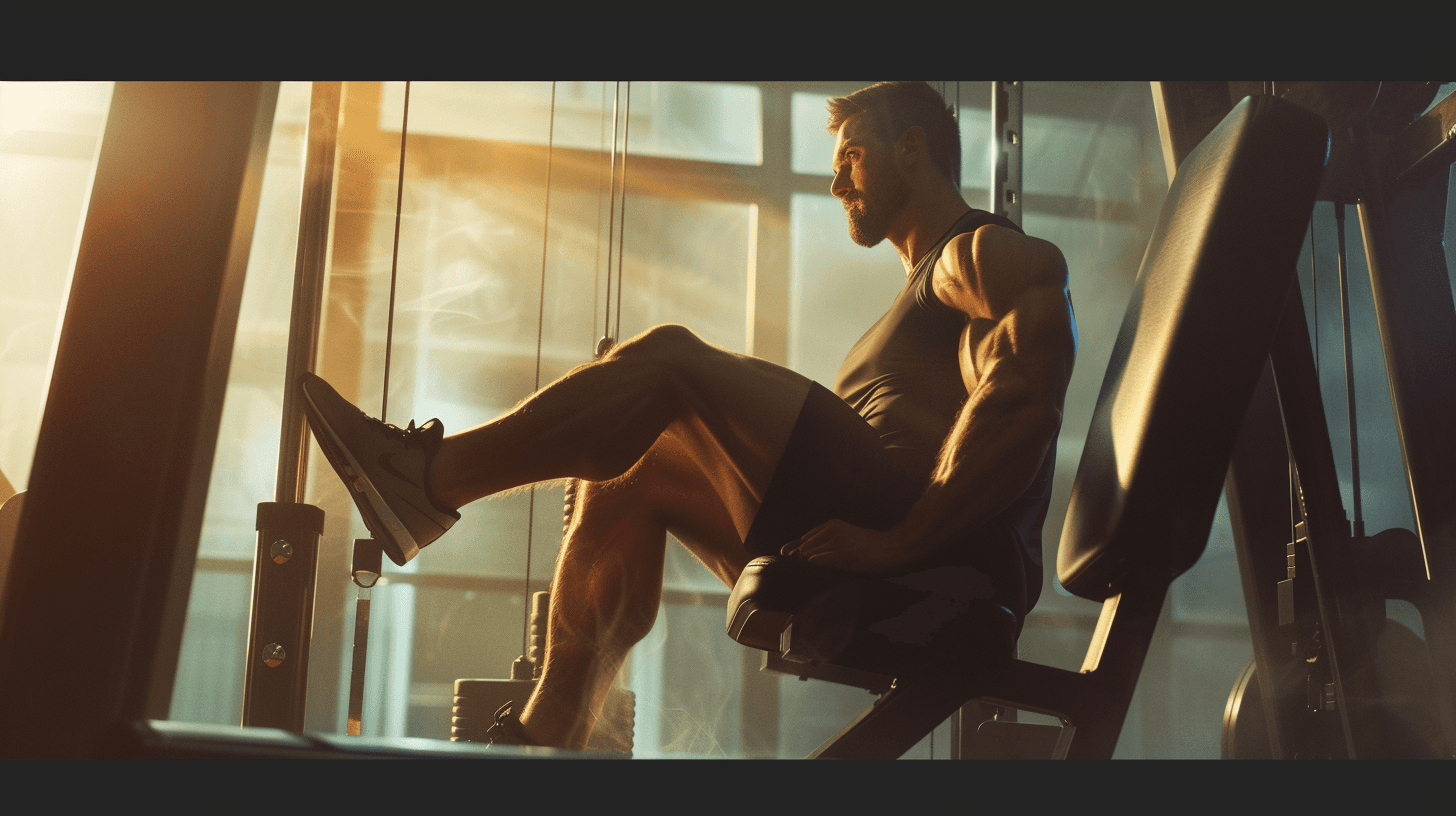Workout
Kas Glute Bridge vs Hip Thrust: Which Is Better for Glute Development?
The Kas glute bridge and hip thrust are key for glute development. Learn their differences, benefits, and how to incorporate both. Join Fit Senpai today.
Jun 29, 2024



Introduction

If you’re aiming for a stronger, more defined posterior, understanding the nuances of different exercises is key. The glutes, comprising the gluteus maximus, medius, and minimus, are not only essential for aesthetics but also for functional movements like walking, running, and lifting. The Kas glute bridge and hip thrust are popular choices for targeting these muscles, but they each have unique advantages. In this post, we’ll break down the mechanics of each exercise, compare their benefits, and help you decide which might be the best fit for your routine.
Introduction

If you’re aiming for a stronger, more defined posterior, understanding the nuances of different exercises is key. The glutes, comprising the gluteus maximus, medius, and minimus, are not only essential for aesthetics but also for functional movements like walking, running, and lifting. The Kas glute bridge and hip thrust are popular choices for targeting these muscles, but they each have unique advantages. In this post, we’ll break down the mechanics of each exercise, compare their benefits, and help you decide which might be the best fit for your routine.
What is the Kas Glute Bridge?

The Kas glute bridge is a variation of the traditional glute bridge, named after fitness expert Kas. This exercise focuses intensely on the glute muscles, providing a powerful stimulus for growth and strength.
How to Perform the Kas Glute Bridge
Setup: Lie on your back with your knees bent and feet flat on the ground. Place a barbell across your hips.
Position: Keep your arms at your sides, holding the barbell to prevent it from rolling.
Movement: Lift your hips towards the ceiling by squeezing your glutes, ensuring your upper back remains on the ground.
Hold and Squeeze: At the top of the movement, hold and squeeze your glutes before lowering back down slowly.
Benefits of the Kas Glute Bridge
Glute Isolation: Provides better glute isolation due to the minimal involvement of the lower back and hamstrings.
Beginner-Friendly: Easier to learn and execute compared to the hip thrust.
Lower Back Friendly: Reduced stress on the lower back makes it suitable for individuals with lower back issues.
What is the Hip Thrust?
The hip thrust, popularized by Bret Contreras, is another highly effective glute exercise. It involves lifting your hips while your upper back is supported by a bench, adding more range of motion and intensity.
How to Perform the Hip Thrust

Setup: Sit on the ground with your upper back against a bench and a barbell placed over your hips.
Position: Bend your knees and place your feet flat on the floor, shoulder-width apart.
Movement: Drive your hips upward by squeezing your glutes until your thighs are parallel to the ground.
Hold and Squeeze: Hold the top position briefly before lowering your hips back down.
Benefits of the Hip Thrust
Increased Range of Motion: Offers a greater range of motion which can lead to more muscle activation.
Strength Gains: Allows for heavier weights, contributing to greater strength improvements.
Core Engagement: Engages the core muscles more due to the elevated position.
Kas Glute Bridge vs Hip Thrust: Key Differences
Muscle Activation
Kas Glute Bridge: Primarily targets the glutes with minimal involvement of other muscles.
Hip Thrust: Targets the glutes but also engages the hamstrings, quads, and core more significantly.
Execution and Difficulty
Kas Glute Bridge: Easier to perform with less setup required, making it ideal for beginners.
Hip Thrust: Requires more setup and stability, suitable for intermediate to advanced lifters.
Versatility and Application
Kas Glute Bridge: Great for focused glute workouts and can be done without a bench.
Hip Thrust: Versatile for various training programs, including strength and hypertrophy.
How to Choose the Right Exercise for You
Choosing between the Kas glute bridge and the hip thrust depends on your fitness goals, experience level, and any physical limitations you might have.
Goals and Experience Level
Beginners: The Kas glute bridge is simpler and safer for those new to strength training.
Intermediate to Advanced Lifters: The hip thrust offers more challenge and variety.
Physical Limitations
Lower Back Issues: The Kas glute bridge places less strain on the lower back.
Seeking Variety: Incorporating both exercises can provide comprehensive glute development.
Incorporating Both Exercises in Your Routine
For optimal glute development, consider including both the Kas glute bridge and hip thrust in your training regimen. Here’s how you can structure your workouts:
Sample Glute Workout
Warm-Up
Duration: 10 minutes
Dynamic Stretches:
Leg swings (front to back): 2 sets of 15 reps per leg
Hip circles: 2 sets of 15 reps per leg
Glute Activation:
Glute bridges: 2 sets of 15 reps
Banded side steps: 2 sets of 20 steps per side
Main Workout
Duration: 45-60 minutes
Exercise 1: Barbell Squats
Sets: 4
Reps: 8-12
Instructions: Position the barbell across your upper back. Stand with your feet shoulder-width apart. Lower your body by bending your knees and hips as if sitting back into a chair. Keep your chest up and back straight. Push through your heels to return to the starting position.
Exercise 2: Romanian Deadlifts
Sets: 4
Reps: 10-12
Instructions: Hold a barbell in front of you with a shoulder-width grip. Keep your knees slightly bent and your back straight. Hinge at the hips to lower the barbell towards your feet, feeling a stretch in your hamstrings and glutes. Return to the starting position by driving your hips forward.
Exercise 3: Hip Thrusts
Sets: 4
Reps: 10-15
Instructions: Sit on the ground with your upper back against a bench and a barbell over your hips. Drive your hips upward by squeezing your glutes until your thighs are parallel to the ground. Hold the top position briefly before lowering your hips back down.
Exercise 4: Bulgarian Split Squats
Sets: 3
Reps: 10-12 per leg
Instructions: Stand a few feet in front of a bench. Place one foot on the bench behind you. Lower your body by bending your front knee, keeping your back straight. Push through your front heel to return to the starting position.
Exercise 5: Glute Kickbacks
Sets: 3
Reps: 15 per leg
Instructions: Attach an ankle strap to a low pulley or use a resistance band. Kneel on all fours with your hands under your shoulders. Kick one leg back and up, squeezing your glutes at the top. Return to the starting position and repeat with the other leg.
Cool Down
Duration: 10 minutes
Static Stretches:
Standing quad stretch: 2 sets of 30 seconds per leg
Seated forward fold: 2 sets of 30 seconds
Foam Rolling:
Glutes and hamstrings: 2-3 minutes
Tips for an Effective Glute Workout

1. Focus on Mind-Muscle Connection
Concentrate on squeezing your glutes during each exercise to maximize muscle activation. This helps ensure you’re targeting the glutes effectively.
2. Use Progressive Overload
Gradually increase the weight or resistance in your exercises to continually challenge your muscles and promote growth.
3. Maintain Proper Form
Ensure you’re using correct form to avoid injuries and maximize the effectiveness of each exercise. If unsure, consider working with a personal trainer.
4. Incorporate Variety
Change up your exercises regularly to prevent plateaus and keep your workouts interesting. Include different types of squats, deadlifts, and hip thrust variations.
5. Stay Consistent
Consistency is key to seeing results. Stick to your workout routine and be patient as you build strength and muscle.
What is the Kas Glute Bridge?

The Kas glute bridge is a variation of the traditional glute bridge, named after fitness expert Kas. This exercise focuses intensely on the glute muscles, providing a powerful stimulus for growth and strength.
How to Perform the Kas Glute Bridge
Setup: Lie on your back with your knees bent and feet flat on the ground. Place a barbell across your hips.
Position: Keep your arms at your sides, holding the barbell to prevent it from rolling.
Movement: Lift your hips towards the ceiling by squeezing your glutes, ensuring your upper back remains on the ground.
Hold and Squeeze: At the top of the movement, hold and squeeze your glutes before lowering back down slowly.
Benefits of the Kas Glute Bridge
Glute Isolation: Provides better glute isolation due to the minimal involvement of the lower back and hamstrings.
Beginner-Friendly: Easier to learn and execute compared to the hip thrust.
Lower Back Friendly: Reduced stress on the lower back makes it suitable for individuals with lower back issues.
What is the Hip Thrust?
The hip thrust, popularized by Bret Contreras, is another highly effective glute exercise. It involves lifting your hips while your upper back is supported by a bench, adding more range of motion and intensity.
How to Perform the Hip Thrust

Setup: Sit on the ground with your upper back against a bench and a barbell placed over your hips.
Position: Bend your knees and place your feet flat on the floor, shoulder-width apart.
Movement: Drive your hips upward by squeezing your glutes until your thighs are parallel to the ground.
Hold and Squeeze: Hold the top position briefly before lowering your hips back down.
Benefits of the Hip Thrust
Increased Range of Motion: Offers a greater range of motion which can lead to more muscle activation.
Strength Gains: Allows for heavier weights, contributing to greater strength improvements.
Core Engagement: Engages the core muscles more due to the elevated position.
Kas Glute Bridge vs Hip Thrust: Key Differences
Muscle Activation
Kas Glute Bridge: Primarily targets the glutes with minimal involvement of other muscles.
Hip Thrust: Targets the glutes but also engages the hamstrings, quads, and core more significantly.
Execution and Difficulty
Kas Glute Bridge: Easier to perform with less setup required, making it ideal for beginners.
Hip Thrust: Requires more setup and stability, suitable for intermediate to advanced lifters.
Versatility and Application
Kas Glute Bridge: Great for focused glute workouts and can be done without a bench.
Hip Thrust: Versatile for various training programs, including strength and hypertrophy.
How to Choose the Right Exercise for You
Choosing between the Kas glute bridge and the hip thrust depends on your fitness goals, experience level, and any physical limitations you might have.
Goals and Experience Level
Beginners: The Kas glute bridge is simpler and safer for those new to strength training.
Intermediate to Advanced Lifters: The hip thrust offers more challenge and variety.
Physical Limitations
Lower Back Issues: The Kas glute bridge places less strain on the lower back.
Seeking Variety: Incorporating both exercises can provide comprehensive glute development.
Incorporating Both Exercises in Your Routine
For optimal glute development, consider including both the Kas glute bridge and hip thrust in your training regimen. Here’s how you can structure your workouts:
Sample Glute Workout
Warm-Up
Duration: 10 minutes
Dynamic Stretches:
Leg swings (front to back): 2 sets of 15 reps per leg
Hip circles: 2 sets of 15 reps per leg
Glute Activation:
Glute bridges: 2 sets of 15 reps
Banded side steps: 2 sets of 20 steps per side
Main Workout
Duration: 45-60 minutes
Exercise 1: Barbell Squats
Sets: 4
Reps: 8-12
Instructions: Position the barbell across your upper back. Stand with your feet shoulder-width apart. Lower your body by bending your knees and hips as if sitting back into a chair. Keep your chest up and back straight. Push through your heels to return to the starting position.
Exercise 2: Romanian Deadlifts
Sets: 4
Reps: 10-12
Instructions: Hold a barbell in front of you with a shoulder-width grip. Keep your knees slightly bent and your back straight. Hinge at the hips to lower the barbell towards your feet, feeling a stretch in your hamstrings and glutes. Return to the starting position by driving your hips forward.
Exercise 3: Hip Thrusts
Sets: 4
Reps: 10-15
Instructions: Sit on the ground with your upper back against a bench and a barbell over your hips. Drive your hips upward by squeezing your glutes until your thighs are parallel to the ground. Hold the top position briefly before lowering your hips back down.
Exercise 4: Bulgarian Split Squats
Sets: 3
Reps: 10-12 per leg
Instructions: Stand a few feet in front of a bench. Place one foot on the bench behind you. Lower your body by bending your front knee, keeping your back straight. Push through your front heel to return to the starting position.
Exercise 5: Glute Kickbacks
Sets: 3
Reps: 15 per leg
Instructions: Attach an ankle strap to a low pulley or use a resistance band. Kneel on all fours with your hands under your shoulders. Kick one leg back and up, squeezing your glutes at the top. Return to the starting position and repeat with the other leg.
Cool Down
Duration: 10 minutes
Static Stretches:
Standing quad stretch: 2 sets of 30 seconds per leg
Seated forward fold: 2 sets of 30 seconds
Foam Rolling:
Glutes and hamstrings: 2-3 minutes
Tips for an Effective Glute Workout

1. Focus on Mind-Muscle Connection
Concentrate on squeezing your glutes during each exercise to maximize muscle activation. This helps ensure you’re targeting the glutes effectively.
2. Use Progressive Overload
Gradually increase the weight or resistance in your exercises to continually challenge your muscles and promote growth.
3. Maintain Proper Form
Ensure you’re using correct form to avoid injuries and maximize the effectiveness of each exercise. If unsure, consider working with a personal trainer.
4. Incorporate Variety
Change up your exercises regularly to prevent plateaus and keep your workouts interesting. Include different types of squats, deadlifts, and hip thrust variations.
5. Stay Consistent
Consistency is key to seeing results. Stick to your workout routine and be patient as you build strength and muscle.

Your all-in-one fitness plan is just one click away
Try it free for 7 days. Cancel anytime.

Your all-in-one fitness plan is just one click away
Try it free for 7 days. Cancel anytime.

Your all-in-one fitness plan is just one click away
Try it free for 7 days.
Cancel anytime.
Conclusion
Both the Kas glute bridge and hip thrust are exceptional exercises for targeting the glutes. While the Kas glute bridge is more beginner-friendly and places less strain on the lower back, the hip thrust offers a greater range of motion and overall muscle activation. By understanding the benefits and execution of each, you can make an informed decision on which exercise aligns best with your fitness goals.
At Fit Senpai, we specialize in creating customized workout and meal plans tailored to your unique needs. Whether you’re a beginner looking to start your fitness journey or an experienced athlete aiming to optimize your training, our expert team is here to help you achieve your health goals. Explore our personalized plans today and take the next step towards a stronger, healthier you.
Conclusion
Both the Kas glute bridge and hip thrust are exceptional exercises for targeting the glutes. While the Kas glute bridge is more beginner-friendly and places less strain on the lower back, the hip thrust offers a greater range of motion and overall muscle activation. By understanding the benefits and execution of each, you can make an informed decision on which exercise aligns best with your fitness goals.
At Fit Senpai, we specialize in creating customized workout and meal plans tailored to your unique needs. Whether you’re a beginner looking to start your fitness journey or an experienced athlete aiming to optimize your training, our expert team is here to help you achieve your health goals. Explore our personalized plans today and take the next step towards a stronger, healthier you.
Conclusion
Both the Kas glute bridge and hip thrust are exceptional exercises for targeting the glutes. While the Kas glute bridge is more beginner-friendly and places less strain on the lower back, the hip thrust offers a greater range of motion and overall muscle activation. By understanding the benefits and execution of each, you can make an informed decision on which exercise aligns best with your fitness goals.
At Fit Senpai, we specialize in creating customized workout and meal plans tailored to your unique needs. Whether you’re a beginner looking to start your fitness journey or an experienced athlete aiming to optimize your training, our expert team is here to help you achieve your health goals. Explore our personalized plans today and take the next step towards a stronger, healthier you.
FAQ
What muscles do the Kas glute bridge and hip thrust target?
Both exercises primarily target the gluteal muscles but the hip thrust also significantly engages the hamstrings and core.
Which exercise is better for beginners?
The Kas glute bridge is generally better for beginners due to its simpler setup and execution.
Can I do both exercises in one workout?
Yes, incorporating both exercises can provide comprehensive glute training.
Do I need special equipment for these exercises?
A barbell and a bench are ideal, but you can also use resistance bands or body weight.
How often should I do glute exercises?
Aim for 2-3 times per week, allowing for adequate rest and recovery.
Is the Kas glute bridge good for lower back pain?
Yes, it places less strain on the lower back compared to the hip thrust.
Can these exercises help with athletic performance?
Yes, strong glutes are crucial for athletic performance in activities like running and jumping.
How can I increase the difficulty of these exercises?
Increase the weight, add resistance bands, or slow down the tempo.
What are common mistakes to avoid?
Avoid overarching the lower back and ensure proper form to prevent injury.
How long does it take to see results?
With consistent training and proper nutrition, you can start seeing results in 4-6 weeks.
FAQ
What muscles do the Kas glute bridge and hip thrust target?
Both exercises primarily target the gluteal muscles but the hip thrust also significantly engages the hamstrings and core.
Which exercise is better for beginners?
The Kas glute bridge is generally better for beginners due to its simpler setup and execution.
Can I do both exercises in one workout?
Yes, incorporating both exercises can provide comprehensive glute training.
Do I need special equipment for these exercises?
A barbell and a bench are ideal, but you can also use resistance bands or body weight.
How often should I do glute exercises?
Aim for 2-3 times per week, allowing for adequate rest and recovery.
Is the Kas glute bridge good for lower back pain?
Yes, it places less strain on the lower back compared to the hip thrust.
Can these exercises help with athletic performance?
Yes, strong glutes are crucial for athletic performance in activities like running and jumping.
How can I increase the difficulty of these exercises?
Increase the weight, add resistance bands, or slow down the tempo.
What are common mistakes to avoid?
Avoid overarching the lower back and ensure proper form to prevent injury.
How long does it take to see results?
With consistent training and proper nutrition, you can start seeing results in 4-6 weeks.
FAQ
What muscles do the Kas glute bridge and hip thrust target?
Both exercises primarily target the gluteal muscles but the hip thrust also significantly engages the hamstrings and core.
Which exercise is better for beginners?
The Kas glute bridge is generally better for beginners due to its simpler setup and execution.
Can I do both exercises in one workout?
Yes, incorporating both exercises can provide comprehensive glute training.
Do I need special equipment for these exercises?
A barbell and a bench are ideal, but you can also use resistance bands or body weight.
How often should I do glute exercises?
Aim for 2-3 times per week, allowing for adequate rest and recovery.
Is the Kas glute bridge good for lower back pain?
Yes, it places less strain on the lower back compared to the hip thrust.
Can these exercises help with athletic performance?
Yes, strong glutes are crucial for athletic performance in activities like running and jumping.
How can I increase the difficulty of these exercises?
Increase the weight, add resistance bands, or slow down the tempo.
What are common mistakes to avoid?
Avoid overarching the lower back and ensure proper form to prevent injury.
How long does it take to see results?
With consistent training and proper nutrition, you can start seeing results in 4-6 weeks.
You may also want to read this:
You may also want to read this:



Push Pull Legs Workout – A Balanced Workout Plan That Works
Build muscle with the Push-Pull-Legs (PPL) workout split. A balanced routine for strength and recovery that’s popular among gym-goers for results.



Achieve Muscle Balance with an Upper and Lower Split Program
Maximize gym sessions with an upper-lower split for strength and balance. Get a custom workout plan to achieve your fitness goals!



Get Maximum Gains with the Ultimate 5-Day Split Workout Plan
Build muscle fast with this 5-day split workout plan. Learn key exercises, progressive overload tips, and recovery strategies to maximize gains
Your all-in-one fitness plan is just one click away
Try it free for 7 days. Cancel anytime.
Your all-in-one fitness plan is just one click away
Try it free for 7 days. Cancel anytime.
Your all-in-one fitness plan is just one click away
Try it free for 7 days. Cancel anytime.




